| | Today I’m interviewing Leigh Drogen, a former quantitative analyst and fund manager who is now the founder and CEO of Estimize. Leigh started his career at Geller Capital where he ran a quantitative non systematic earnings acceleration and analyst estimate revision model which also relied heavily upon relative strength and trend following. He then went on to run Surfview Capital successfully employing a similar strategy before moving into the financial technology world. Prior to founding Estimize he was an early member of the product and business development teams at StockTwits, the largest social network of investors on the web. Estimize, Inc. was founded in 2011 to provide the financial community with a platform for the generation of estimate data sets from buy side and independent analysts, as opposed to current data sets such as IBES which only source from sell side analysts. Beginning with a focus on EPS and Revenue models for public companies, Estimize now has over 13,000 member analysts and coverage on over 1,000 companies. Their consensus estimate numbers are not only more accurate than comparable data sets from the sell side, but their open and transparent platform allows members to view the depth of estimates and identify the analysts with the highest accuracy metrics over time. You can now find the Estimize data set on Bloomberg and can register for the service here. So what’s in your library Leigh? 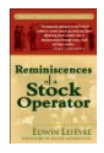 Reminiscences of a Stock Operator by Edwin Lefevre - There’s no other text that captures as well what it feels like to operate in financial markets than Reminiscences of a Stock Operator. This book really was my indoctrination at the age of 15 and taught too many lessons to count. Above all though it drove home the fact that it’s far easier to make money positioned in the direction of the primary trend as opposed to attempting to outsmart everyone else by going against it. Play big a few times a year when the odds are heavily in your favor and go to the beach when it’s not your market. 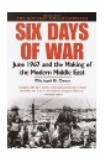 Six Days of War: June 1967 & The Making Of The Modern Middle East by Michael B. Oren - I studied war theory during my undergraduate education and was able to transfer many of the lessons into money management and building companies. Six Days of War was a detailed account of the calculations made by military and political leaders on both sides of the 1967 war between Israel and its neighbors as well as the global powers both before and during the conflict. The primary difference between Israel’s ability and Egypt’s inability to execute their strategies was the accurate, or in the case of Egypt, inaccurate flow of information from front line soldiers up to tactical and strategic decision makers. Information is power and you can not make quality decisions without it. 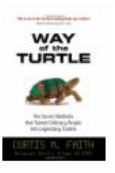 Way of the Turtle: The Secret Methods That Turned Ordinary People Into Legendary Traders by Curtis Faith - Trading Places was a hilarious movie, so when someone told me a story about how some Chicago traders basically did it for real, I had to read Way of the Turtle. Putting aside the fact that it was an extremely entertaining story, the main lesson of developing and back testing a strategy that works, and then sticking to it over the course of time really resonated with me. It also deeply ingrained in me the belief that buying begets buying and selling begets selling. You want to scale up into longs and down into shorts, not the other way around, use momentum to your advantage don’t fight it, the big panic moves in both directions are where the money is made. 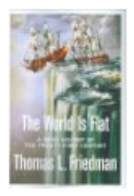 The World Is Flat: A Brief History Of The 21st Century by Thomas Friedman - Tom Friedman is one of my favorite writers for his ability to see the forest through the trees. Tom writes how our minds should operate, he takes a lot of individual anecdotal stories along with hard data and builds a thesis with them. The World Is Flat taught me how to step back and think about the inevitability of certain global trends and how they impact the micro environment. Just being on the right macro curve and not fighting against the larger forces at work can set you up for success in many cases to a greater extent than even your execution in a micro sense.  Technical Analysis of Stock Trends by John Magee - Technical analysis is scoffed at by many as using a crystal ball, largely because technicians have not positioned the skill set in the right way. Understanding patterns in the supply and demand for any asset is extremely important in order to manage risk, the study of technical analysis gives that to us. This book is basically the first text anyone who wishes to understand this practice should read, and in my opinion that is anyone who operates in financial markets where there is a bid and an ask. 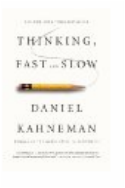 Thinking Fast and Slow by Daniel Kahneman - Daniel Kahneman is a hero of mine and a huge influence on how I think about, well, thinking. I believe heavily in behavioral finance and that markets are extremely inefficient due to the large gap between was Kahneman calls “Humans and Econs”, Econs being the fictional perfectly rational actors. His study of heuristics that influence our behavior and decision making is necessary reading for anyone who wants to understand their own decision making and how to take advantage of the flawed process that others use. Thanks Leigh. As always, you can buy the books Leigh talked about in the Sniper Book Bin Sign up for The Sure Shot Letter, my monthly newsletter. As an added bonus, I will throw in access to my blog, The Daily Kill Sheet. The Sure Shot Letter provides long-term investment ideas on a monthly basis, while The Daily Kill Sheet provides short-term trading ideas twice weekly. |
 RSS Feed
RSS Feed
